The spring selling season is sporting sales declines in 78% of MSAs surveyed, and the prices nationally have fallen 4.5% in the last year.
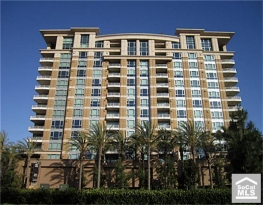

Irvine Home Address … 3101 SCHOLARSHIP Irvine, CA 92612
Resale Home Price …… $880,000

Rise up this mornin'; smiled with the risin' sun.
Three little birds pitch by my doorstep
Singin' sweet songs of melodies pure and true; saying,
“This is my message to you-ou-ou.”
Singin': “Don't worry about a thing,
‘cause ev-ry little thing gonna be all right.”
Bob Marley — Three Little Birds
Is everything going to be all right? Every press release from the National Association of realtors would lead you to believe so. Remember the post on how realtors spin data? 
Data: Factual statements that present statistics or some measurable phenomenon. Presenting data is ostensibly the reason for a real estate press release. However, the real intention is to spin the data or otherwise manipulate the interpretation.
Spin: The offered interpretation of data that forwards the agenda of the organization issuing the press release. Spin is usually a plausible interpretation that is most often taken out of context, knowingly, by the authors.
Bullshit: An interpretation of data that is either not factual, or the data itself is not factual, or an interpretation that is not plausible based on the data. Bullshit is an obvious lie an organization passes off to a gullible public in hopes that nobody catches on.
The color coding of text above will be used to help decipher the nonsense that follows.
Because the current data is so bad, the NAr set the spin cycle on high for their first quarter report.
Existing-Home Sales Rise in Most States in First Quarter; Metro Area Prices Mixed
Washington, DC, May 10, 2011
Existing-home sales continued to recover in the first quarter with gains recorded in 49 states and the District of Columbia, while 22 percent of the available metropolitan areas saw prices rise from a year ago, according to the latest survey by the National Association of realtors®.
Home sales did not recover in the first quarter. In fact, they are off considerably. While it may be technically factual that gains were recorded in 49 states, it only takes one reporting location to make that statement true. Nearly every state and the nation as a whole saw declines in sales and in prices. Further, if only 22 percent of MSAs saw prices rise, then 78% saw prices go down. The NAr bullshit doesn't pass the giggle test.
Total state existing-home sales, including single-family and condo, rose 8.3 percent to a seasonally adjusted annual rate1 of 5.14 million in the first quarter from 4.75 million in the fourth quarter, and are only 0.8 percent below a 5.18 million pace during the same period in 2010.
Sales always rise from the 4th quarter to the 1st. Leading off with that spun data point leads them to the far more damaging reality that sales are down from last years anemic levels.
Also in the first quarter, the median existing single-family home price rose in 34 out of 153 metropolitan statistical areas (MSAs) from the first quarter of 2010, including four with double-digit increases; one was unchanged and 118 areas showed price declines.
That is one of the most egregious statements of bullshit I have seen the NAr put out. If prices are falling in 118 out of 153 MSAs, that is 78% of the market. Prices are falling in 78% of the markets surveyed. Read their statement again. Didn't is sound positive? The bullshit lead discusses how many MSAs where the prices are going up. Unbelievable… well, actually this is the NAr.
.png)
Now let's hear from the master bullshitter, Lawrence Yun.
Lawrence Yun, NAR chief economist, said home prices are all over the map. “The reading of quarterly price data can be volatile because they are based on the types of homes that are sold during the quarter. When buyers principally purchase distressed properties in a given market, the recorded prices will be very low, which is what we’re seeing now in much of the country,” he said. “Annual price data provides a better guide about the direction of the market in those areas.”
The national median existing single-family home price was $158,700 in the first quarter, down 4.6 percent from $166,400 in the first quarter of 2010.
I think Yun forgot to proofread his own press release. He was trying to spin the data by saying the annual price change is a better guide, but then he followed with the fact that house prices are down significantly from last year.
He's right about this one. The momentum from last years declines will likely carry forward to the foreseeable future.
The median is where half sold for more and half sold for less. Distressed homes, typically sold at a discount of about 20 percent, accounted for 39 percent of first quarter sales, up from 36 percent a year earlier.
That is some very bad data. How do you think he will spin it? 
To clarify, Yun said lower priced homes have seen the best sales performance. “The biggest sales increase has been in the lower price ranges, which are popular with investors and cash buyers,” he said. “The preponderance of sales activity at the lower end is bringing down the median price, so what we’re seeing is the result of a change in the composition of home sales.”
First he is spinning the data by discussing investors and cash buyers. The reality is sales are higher in lower price ranges because that is what people can afford. Affordability is driving sales away from bloated high-end properties toward affordable low-end ones.
He is suggesting in his bullshit that the median home price is artificially low due to a change in mix and things are not as bad as they seem. The fact is high-end prices are too high, credit availability is low, and the buyer pool is seriously depleted. High-end homes will continue to sell slowly until the prices are lowered to affordable levels.
Although sales are slightly below a year ago, the volume of homes sold for $100,000 or less in the first quarter was 8.9 percent higher than the first quarter of 2010, creating a downward skew on the overall median price. The share of all-cash home purchases rose to 33 percent in the first quarter from 27 percent in the first quarter of 2010.
Investors accounted for 21 percent of first quarter transactions, up from 18 percent a year ago, while first-time buyers purchased 32 percent of homes, down from 42 percent in the first quarter of 2010 when a tax credit was in place. Repeat buyers accounted for a 47 percent market share in the first quarter, up from 40 percent a year earlier.
The tax credit definitely pulled forward first-time homebuyer demand. The decline in sales to first-time buyers is not a good sign for a housing market that needs household formation and first-time buyers to mop up the REO inventory.
“The rising sales trend in nearly all states is a part of the healing process to clear off inventory. Sales need to rise before prices can firm up,” Yun added.
Another damaging truth he forgot to spin. Sales do need to rise before prices can firm up. That's why declining sales during a period of the year when they should be increasing is worrying to market analysts.
NAR President Ron Phipps, broker-president of Phipps Realty in Warwick, R.I., said strong sales of distressed homes are exactly what the market needs. “The good news is foreclosures, which account for two-thirds of all distressed homes sold, are selling very quickly,” he said. “Short sales still take far too long to get lender approval, but it appears the inventory of distressed property is peaking and will be gradually declining next year. This means the market should slowly return to balance. We are encouraged that recent home buyers are having exceptionally low default rates.”
If two-thirds of sales are distressed properties, prices are going to go down. He spins the data by saying these are selling quickly, but based on the data above, that is bullshit.
If the inventory of distressed homes won't peak until later this year and begin to decline next year, what is the urgency to buy?
Recent home buyers are not having exceptionally low default rates unless you are comparing their default rates to the garbage loans underwritten at much higher prices during the 00s. Current default rates are still elevated well above historic norms even for the newest vintage of loans because prices are still falling and most recent buyers with low down payments are already under water.
The rest of the report is data, so I will spare you the green text. I have highlighted the interesting facts to bring them to your attention.
According to Freddie Mac, the national commitment rate on a 30-year conventional fixed-rate mortgage averaged 4.85 percent in the first quarter, up from a record low 4.41 percent in the fourth quarter, but below the 5.00 percent average in the first quarter of 2010.
In the condo sector, metro area condominium and cooperative prices – covering changes in 53 metro areas – showed the national median existing-condo price was $152,900 in the first quarter, down 10.4 percent from the first quarter of 2010. Eleven metros showed increases in the median condo price from a year ago, one was unchanged and 41 areas had declines.
The condo market is a shambles. Prices are down more than 10% year-over-year, and prices have declined in 77% of the MSA polled. That is horrible. 
Regionally, existing-home sales in the Northeast increased 0.8 percent in the first quarter to a level of 800,000 but are 7.3 percent below the first quarter of 2010. The median existing single-family home price in the Northeast declined 5.0 percent to $234,100 in the first quarter from a year ago.
Existing-home sales in the Midwest rose 7.9 percent in the first quarter to a pace of 1.09 million but are 5.0 percent below a year ago. The median existing single-family home price in the Midwest fell 5.3 percent to $124,400 in the first quarter from the same period in 2010.
In the South, existing-home sales increased 8.5 percent in the first quarter to an annual rate of 1.96 million and are 2.8 percent higher than the first quarter of 2010. The median existing single-family home price in the South slipped 0.6 percent to $141,800 in the first quarter from a year earlier.
Existing-home sales in the West jumped 13.5 percent in the first quarter to a level of 1.29 million and are 2.1 percent above a year ago. The median existing single-family home price in the West fell 4.7 percent to $197,400 in the first quarter from the first quarter of 2010.
Did you notice that in every region prices declined? Sales were mixed, but the price drops were uniform. Nothing in this press release was encouraging, and for an organization dedicated to creating false urgency in buyers, it's very difficult to spin to their advantage. Perhaps someday, they won't try? I'm not holding my breath.

$1,093 HOA dues
Today's featured property is a flip in Avenue One, an Irvine high rise that never should have been built. It's a standard flip from what I can tell. My data source does not have the purchase record on this property. I was surprised by this seller believing they could fetch a price that the previous seller could not get last year when prices were higher. Perhaps he believes the property is now more valuable because he owns it. Or perhaps he is a delusional fool who will either lose money or fail to sell the property.
Property History for 3101 SCHOLARSHIP
| Date | Event | Price | ||
|---|---|---|---|---|
| May 04, 2011 | Listed (Active) | $880,000 | ||
| Dec 30, 2010 | Sold (MLS) (Closed) | $700,000 | ||
| Dec 23, 2010 | Pending (Backup Offers Accepted) | — | ||
| Oct 22, 2010 | Price Changed | $798,500 | ||
| Oct 20, 2010 | Price Changed | $799,500 | ||
| Oct 06, 2010 | Price Changed | $829,500 | ||
| Jul 15, 2010 | Listed (Active) | $849,500 | ||
The HOA dues in these towers are shocking. With monthly cash outlays exceeding $5,500 and a cost of ownership exceeding $4,300 per month, why would anyone buy one of these?
Oh yeah, prices are going back up…



Irvine House Address … 3101 SCHOLARSHIP Irvine, CA 92612 ![]()
Resale House Price …… $880,000
House Purchase Price … $700,000
House Purchase Date …. 12/30/2010
Net Gain (Loss) ………. $127,200
Percent Change ………. 18.2%
Annual Appreciation … 56.2%
Cost of House Ownership
————————————————-
$880,000 ………. Asking Price
$176,000 ………. 20% Down Conventional
4.62% …………… Mortgage Interest Rate
$704,000 ………. 30-Year Mortgage
$155,033 ………. Income Requirement
$3,617 ………. Monthly Mortgage Payment
$763 ………. Property Tax (@1.04%)
$0 ………. Special Taxes and Levies (Mello Roos)
$183 ………. Homeowners Insurance (@ 0.25%)
$0 ………. Private Mortgage Insurance
$1093 ………. Homeowners Association Fees
============================================
$5,656 ………. Monthly Cash Outlays
-$868 ………. Tax Savings (% of Interest and Property Tax)
-$907 ………. Equity Hidden in Payment (Amortization)
$305 ………. Lost Income to Down Payment (net of taxes)
$130 ………. Maintenance and Replacement Reserves
============================================
$4,316 ………. Monthly Cost of Ownership
Cash Acquisition Demands
——————————————————————————
$8,800 ………. Furnishing and Move In @1%
$8,800 ………. Closing Costs @1%
$7,040 ………… Interest Points @1% of Loan
$176,000 ………. Down Payment
============================================
$200,640 ………. Total Cash Costs
$66,100 ………… Emergency Cash Reserves
============================================
$266,740 ………. Total Savings Needed
Property Details for 3101 SCHOLARSHIP Irvine, CA 92612
——————————————————————————
Beds: 2
Baths: 2
Sq. Ft.: 1715
$513/SF
Property Type: Residential, Condominium
Style: One Level, High or Mid-Rise Condo
View: City Lights, City, Faces West
Year Built: 2008
Community: Airport Area
County: Orange
MLS#: U11001952
Source: SoCalMLS
Status: Active
——————————————————————————
 A perfect 10! Located in one of Irvine's most exclusive, prestigious and sought after communities, this 2 bedroom and a den stylish 10th floor, high-end luxury high-rise home boasts the picturesque city view during the day, and gorgeous city lights view at night; this home will absolutely take your breath away. A jaw dropping gourmet kitchen with granite counter tops, marble flooring and all built-in Viking appliances. Community ammenties include rooftop pool and firepit, a large oversized clubroom with full gourmet catering kitchen, outdoor bar-b-ques, indoor gym, and a wine room with private storage locker, 24 hour lobby attendant and concierge service. HOA dues includes: internet, TV, water, gas, trash, insurance, 2 parking spaces, storage space and numerous guest parking. With so many upgrades throught out this home, this hidden gem is a must see. Call for appointment today!
A perfect 10! Located in one of Irvine's most exclusive, prestigious and sought after communities, this 2 bedroom and a den stylish 10th floor, high-end luxury high-rise home boasts the picturesque city view during the day, and gorgeous city lights view at night; this home will absolutely take your breath away. A jaw dropping gourmet kitchen with granite counter tops, marble flooring and all built-in Viking appliances. Community ammenties include rooftop pool and firepit, a large oversized clubroom with full gourmet catering kitchen, outdoor bar-b-ques, indoor gym, and a wine room with private storage locker, 24 hour lobby attendant and concierge service. HOA dues includes: internet, TV, water, gas, trash, insurance, 2 parking spaces, storage space and numerous guest parking. With so many upgrades throught out this home, this hidden gem is a must see. Call for appointment today!
ammenties? throught?


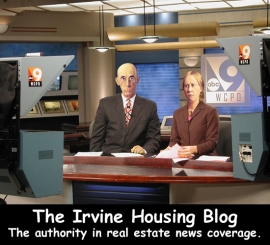
Have a great weekend,
Irvine Renter
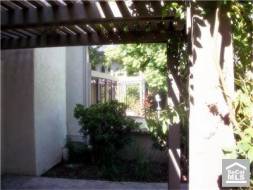






 Those are the standard reasons for strategic default we have discussed at length on this blog. They are good reasons. Anyone facing those circumstances will benefit financially from walking away. That's why strategic default is so common and will become the norm before this crisis has past.
Those are the standard reasons for strategic default we have discussed at length on this blog. They are good reasons. Anyone facing those circumstances will benefit financially from walking away. That's why strategic default is so common and will become the norm before this crisis has past.






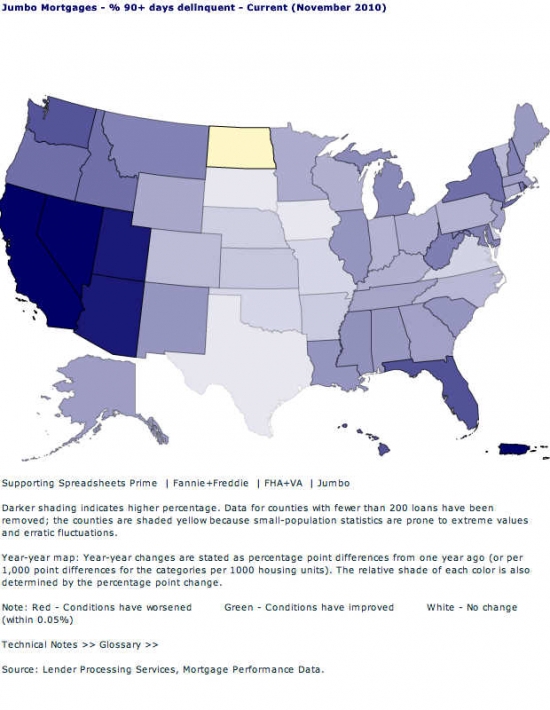



 Large master bedroom with huge views over the city of Irvine and a spacious bathroom with separate shower and tub, double sinks and walk in closet. There is a separate laundry room, off the huge kitchen with gorgeous granite counter tops and new dishwasher and a private outside patio just right for BBQ's and a quiet morning coffee and paper reading! New upgraded carpet and padding throughout and Italian porcelain tile on the bathroom and kitchen floors. New fittings and fixtures in wetbar and bathrooms and kitchen, just move in!! What a FIND!
Large master bedroom with huge views over the city of Irvine and a spacious bathroom with separate shower and tub, double sinks and walk in closet. There is a separate laundry room, off the huge kitchen with gorgeous granite counter tops and new dishwasher and a private outside patio just right for BBQ's and a quiet morning coffee and paper reading! New upgraded carpet and padding throughout and Italian porcelain tile on the bathroom and kitchen floors. New fittings and fixtures in wetbar and bathrooms and kitchen, just move in!! What a FIND! 














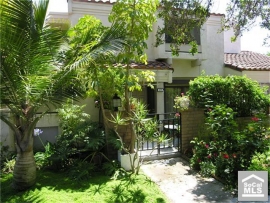
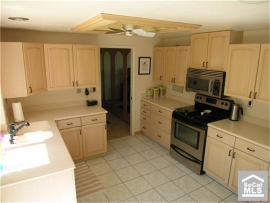





















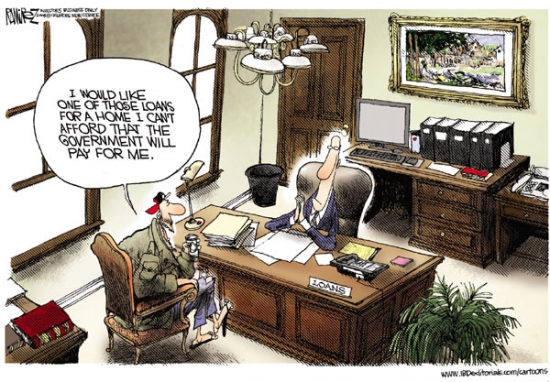





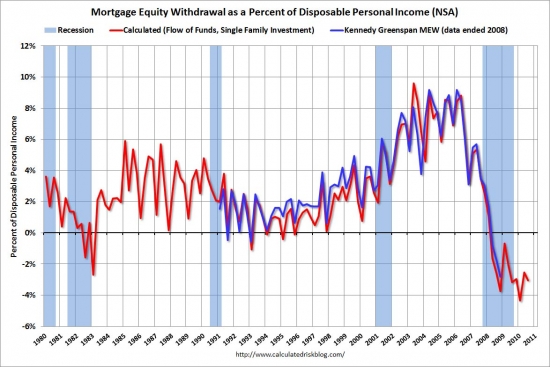

.jpg)

